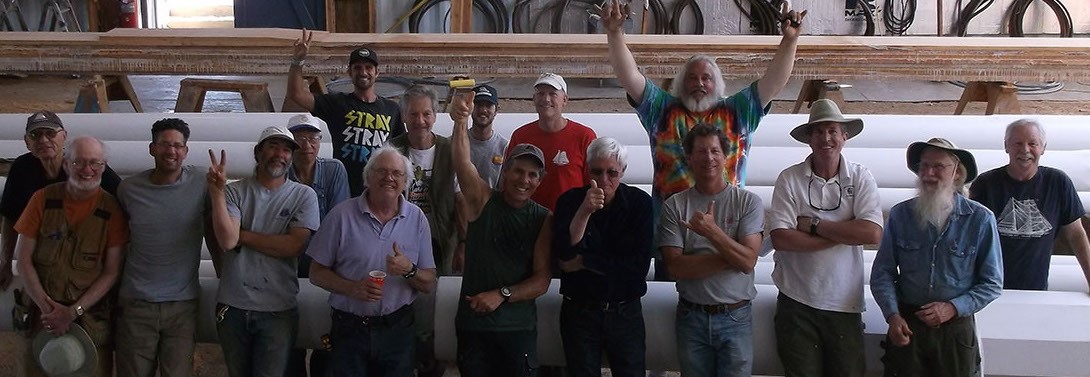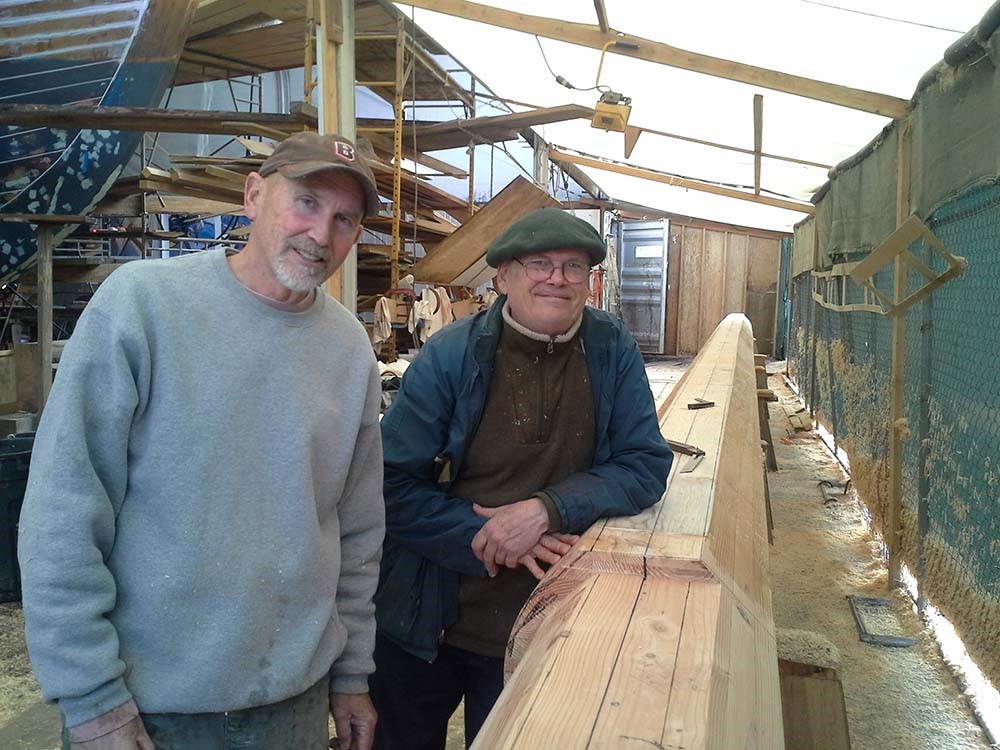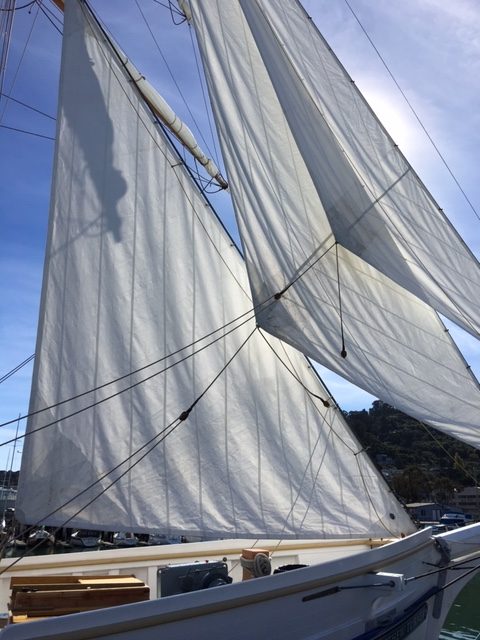Where is Newcomb from, and was he involved with boats there?
Newcomb hails from Stanford, Connecticut. He loved sailing with his dad in the family’s 35” Rhodes Eastern Interclub on Long Island Sound. After many years away from sailing, he bought a Nacra 5.2 Cat in Miami in the late 1970s and trailered it north. It was the first one in the Northeast. He later sold it to Dave Hubbard, an early designer of wing sails for Little America’s Cup catamarans, decades before Oracle used a wing sail to win the 2010 America’s Cup.
Many years later, after moving to California, he visited Port Townsend, Washington. While there, he left a notice on bulletin boards all over town—artist, machinist, mechanic, luthier, “wanna-be” boat builder looking for a job or intern position. He forgot about the notice until he got a call from a couple restoring a boat in Port Townsend. He flew up from California, spent a few days with them, and saw their new workshop, where one of the projects was restoring a 52” Alden, re-planking her with trunnions (wood fasteners, not metal nails). After the interview, he got the green light to move there and work with the boat builder. It was a dream come true for Newcomb, to stay with this lovely couple—he would live in his RV at the new shop—and work on boats! Back in San Rafael, while arranging to move to Port Townsend, he had a medical checkup and got a diagnosis of cancer, which required an operation. He decided not to move and impose his problems on the nice folks in Washington. He felt so bad that he did not even inform them of his reason for not following through.
How did he hear about the educational tall ship Matthew Turner?
In late 2013, soon after the heartbreak of losing his chance to learn about boat building in Port Townsend, Newcomb heard about Call of the Sea and the educational tall ship. He offered to be the night watchman for the project, a position he held for over four years. Work on the educational tall ship took the place of his dream job in Port Townsend. The family of volunteers, a place of belonging, and the opportunity to be involved with building the tall ship “sailed” into his life at just the right time.
What is Newcomb’s favorite task with the educational tall ship—boat-building, or otherwise?
His skills as a machinist, which he studied starting in 10th grade to being a trainee machinist for Pratt and Whitney Aircraft, and as a woodworker who made wooden instruments have been widely applied to the building of Matthew Turner. His talent with metal work has been the most valuable, since there are not many individuals with that skill volunteering on the ship. He did lots of woodwork on planks and took on a key role making most of the spars. Constructing the eliptical boom with the help of Billy Hager was the most rewarding and enjoyable job for Newcomb because of the math and drafting involved. He has also sharpened tools and fixed machinery and boat parts at the workshop.
Is there anything specific he’s learned while volunteering here?
All his life, Newcomb has taken ample time to think through and learn more about the process of ship building and to make things just right, with no thought to deadlines. At the educational tall ship, he learned to get work done in a timely way, in consideration of practical matters and deadlines.
Does Newcomb plan to continue working on boat building after Matthew Turner is complete?
He would like to, provided he can find a place, such as an old barn, where he can build small boats. He hopes to build a 33” trimaran of his own design.
What is his next adventure?
Newcomb has been doing music-related woodwork over the past few years, such as restoring pianos, and using his skills as a luthier. He is now getting serious about his career in musical instrument construction and repair and in doing other types of woodworking.
Special thanks to Jim Gabbert for supporting our volunteers!

Newcomb Barger

Volunteer Team Hard at Work!

Newcomb Barger (right) in the Construction Tent

Testing the Forward Sails

